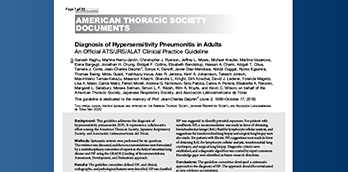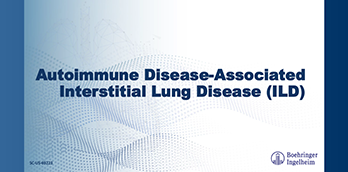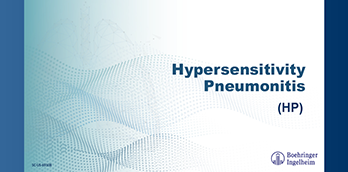Idiopathic Pulmonary Fibrosis - Slide Deck
Review the epidemiology, impact on health-related quality of life, and pathogenesis of idiopathic pulmonary fibrosis (IPF), including diagnosing the disease based on radiological and histological features.
What you’ll learn:
- The characteristics of IPF
- The epidemiology and burden of IPF, including the impact on health-related quality of life (QOL) and mortality
- Risk factors for the development of IPF and comorbid conditions associated with the disease
- The underlying pathogenesis in IPF, which is characterised by progressive fibrosis
- The clinical presentation of IPF, including exertional dyspnea, nonproductive cough, and digital clubbing
- Delays in the diagnosis of IPF and best practices for diagnosing the disease, including the evaluation of radiological and histopathological features
Related Resources

Chronic Fibrosing ILD with Progressive Phenotype - HCP Resource
Diagnosis of HP in Adults - Clinical Practice Guideline
Guidelines from the American Thoracic Society offering a systematic approach to diagnosing hypersensitivity pneumonitis (HP).
View Resource

Chronic Fibrosing ILD with Progressive Phenotype - HCP Resource
Autoimmune Disease-Associated Interstitial Lung Disease - Slide Deck
Review autoimmune connective tissue disorders (CTDs) associated with ILD.
View Resource

Chronic Fibrosing ILD with Progressive Phenotype - HCP Resource
Hypersensitivity Pneumonitis - Slide Deck
Discover the characteristics, epidemiology, and pathogenesis of HP.
View Resource
